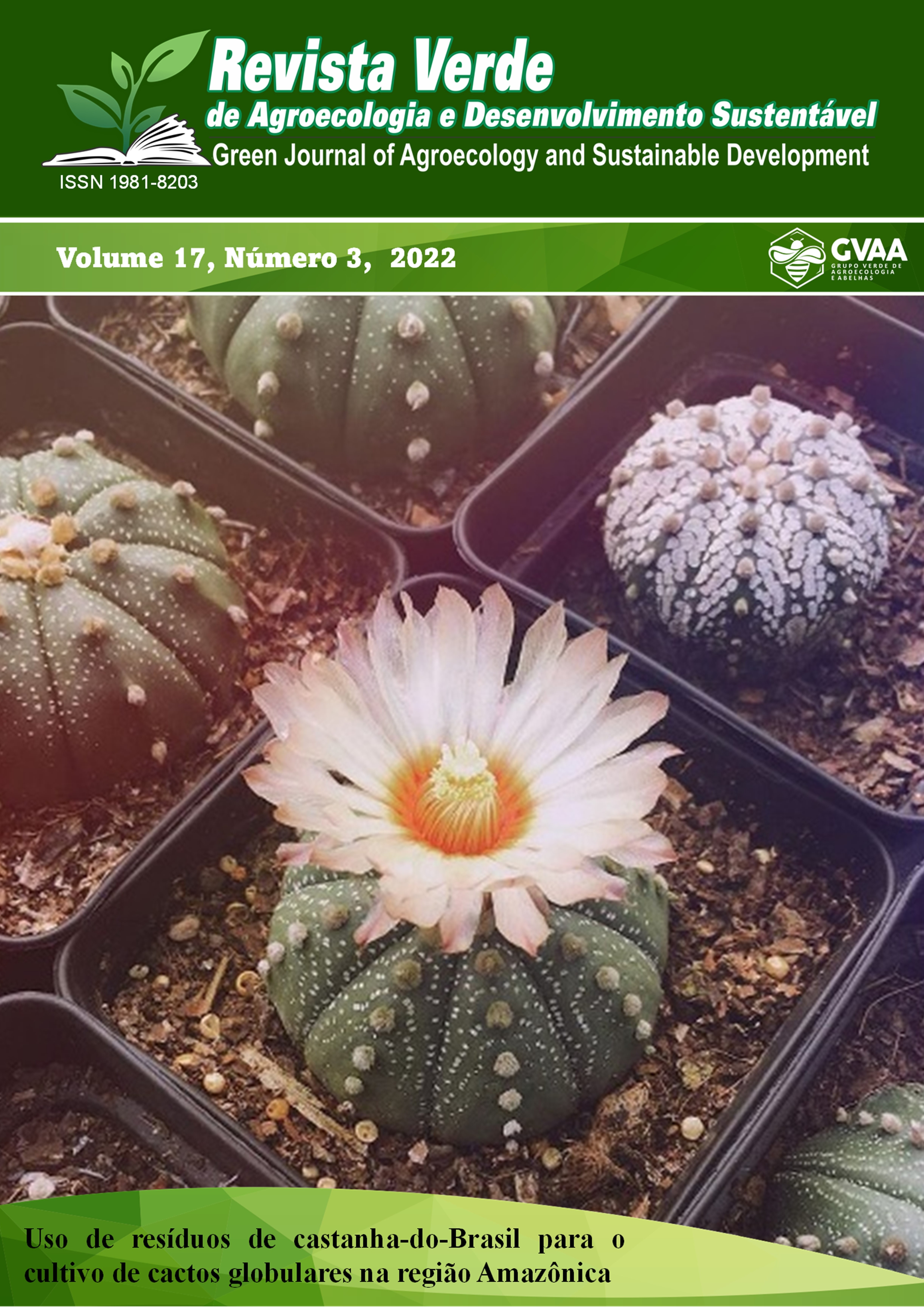Sustainable technology for the production of artisanal cassava starch
DOI:
https://doi.org/10.18378/rvads.v17i3.9269Keywords:
Flour substitute, Starch flour, Composite central design, Sustainable technologyAbstract
Yucca starch (Manihot esculenta Crantz) plays several important roles in agroecological agriculture in the tropics. It is an inexpensive source of carbohydrates of high nutritional quality and easily accessible, if preserved and stored. The process of starch artisanal extraction is carried out in Latin America in a rudimentary and impractical way, with water and raw material wasted, which generates losses and ecological problems. This study shows how a prototype of a technological process (Matilda v1.0) for the artisan extraction of yucca starch was designed, built, and optimized. The optimization was performed using the response surface methodology, and the experimental design is a Box-Wilson 23 full factorial central composite, uniformly rotated and orthogonally blocked per day. Around 60 kg of starch for 200 kg yucca on a working day was obtained. The estimated starch yield was 31.83%, within a confidence interval of (30.24-32.97%) and a prediction interval of (27.98-35.23%). This yield was higher than that reported for conventional artisanal extraction. Water use was about 0.3 L kg-1 yucca, significantly lower than in artisanal productions. The process developed would generate a lower impact on the environment and would allow small producers to empower themselves with sustainable technologies.
Downloads
References
ACOSTA, L. Practical guide for the systematization of technical cooperation projects and programs. FAO, 2005.
ALARCÓN, F. M.; DUFOUR, D. Cassava sour starch in Colombia. In: OSPINA, B.; Ceballos, H. (Eds.), Cassava in the third millennium: modern production, processing, use, and marketing systems, Centro Internacional de Agricultura Tropical, Consorcio Latinoamericano y del Caribe de apoyo a la investigación y desarrollo de la Yuca, Technical Centre for Agricultural and Rural Cooperation, 2012, p.496–525.
ÁLVAREZ, E.; BELLOTI, A.; CALVERT, L.; ARIAS, B.; CADAVID, L. F.; PINEDA, B.; LLANO, G., CUERVO, M. Guía práctica para el manejo de las enfermedades, las plagas y las deficiencias nutricionales de la yuca. Centro Internacional de Agricultura Tropical, (CIAT) Consorcio Latinoamericano y del caribe de Apoyo a la investigación y desarrollo de la Yuca, 2002.
ARISTIZÁBAL, J.; SÁNCHEZ, T. Guía técnica para producción y análisis de almidón de yuca. FAO, 2007.
BELLO-PÉREZ, L. A.; GONZÁLEZ-SOTO, R. A.; SÁNCHEZ-RIVERO, M. M.; GUTIÉRREZ-MERAZ, F.; VARGAS-TORRES, A. Extrusión de almidones de fuentes no convencionales para la producción de almidón resistente. Agrociencia, 40(4), 441–448, 2006.
BOX, G. E. P.; WILSON, K. B. On the experimental attainment of optimum conditions. Journal of the Royal Statistical Society, 13(1), 1–45, 1951.
CARTAY, R. Difusión y comercio de la yuca (Manihot esculenta) en Venezuela y en el mundo. Agroalimentaria, 9(18), 13–22, 2004.
COVENIN. Norma Venezolana COVENIN 1513-80. Productos de cereales y leguminosas: determinación de humedad. Comisión Venezolana de Normas Industriales, 1980.
OLIVEIRA, O. S.; BRITO, V. H. S.; CEREDA, M. P. Establishing a standard for handmade Brazilian cassava flour from Baixada Cuiabana (Mato Grosso, Brazil) to support its processing and sale. Food Science and Technology, 39(3), 559–566, 2019. https://doi.org/10.1590/fst.30117
DOMÍNGUEZ, C.; CEBALLOS, L. F.; FUENTES, C. Morfología de la planta de yuca. In DOMÍNGUEZ, C. E. (Ed.), Yuca: Investigación, producción y utilización, Programa de las Naciones Unidas para el Desarrollo, Centro Internacional de Agricultura Tropical, 1983, p.24–49.
EHINMOWO, O. O.; Ojo, S. O. Analysis of technical efficiency of cassava processing methods among small scale processors in south-west, Nigeria. American Journal of Rural Development, 2(2), 20–23, 2014. https://doi.org/10.12691/ajrd-2-2-1
FAO & WHO. Codex standard for edible cassava flour Codex Stan 176-1989. In: Codex Alimentarius Volume 7 – 1995. Food and Agriculture Organization of the United Nations, World Health Organization, 1995.
FREECAD. FreeCAD v0.15 software, 2015. Available in: https://www.freecadweb.org/
MALIRO, M. F. A.; LAMECK, GPotential of cassava flour as a gelling agent in media for plant tissue culture. African Journal of Biotechnology, 3(4), 244–247, 2004.
MONTGOMERY, D. C. Design and analysis of experiments (2nd ed.). Wiley Ed., 1986.
NGNASSI, D. A. B.; DOKA, Y. S.; NZIE, W. Design of a cassava processing unit in starch. International Journal of Innovations in Engineering Research and Technology, 6(3), 39–48, 2019.
PARMAR, A.; STURM, B.; HENSEL, O. Crops that feed the world: production and improvement of cassava for food, feed, and industrial uses. Food Security, (9), 907–927, 2017. https://doi.org/10.1007/s12571-017-0717-8
ROMAY, G.; MATHEUS, J.; GERSTL, A.; RUEDA, R.; SANTANA, M. A. Almidón modificado de yuca como sustituto económico del agente solidificante para medios de cultivo de tejidos vegetales. Interciencia, 31(9), 686–699, 2006.
SARANRAJ, P.; BEHERA, S. S.; RAY, R. C. Traditional foods from tropical root and tuber crops: innovations and challenges. In: GALANAKIS. C. M. (Ed.). Innovations in traditional foods Woodhead Publishing, 2019, p.159–191.
SHITTU, T. A.; ALIMI, B. A.; WAHAB, B.; SANNI, L. O.; ABASS, A. B. Cassava flour and starch: processing technology and utilization. In: SHARMA, H. K.; NJINTANG, N. Y.; SINGHAL, R. S.; KAUSHAL, P. (Eds.), Tropical roots and tubers: production, processing and technology, John Wiley & Sons, Ltd., 2016, p.415–450.
STAT-EASE. Design-Expert®, 2008. Available in: http://www.statease.com
YOUNG, T. L. The handbook of project management: a practical guide to effective policies and procedures (2nd ed.). Kogan Page, 2007.
ZAMBRANO, L.; SOSA, S. Evolución del consumo de alimentos en Venezuela (1998–2017). Instituto de Investigaciones Económicas y Sociales, Universidad Católica Andrés Bello, 2018.
ZHU, F.; XIE, Q. Structure and physicochemical properties of starch. In: SUI, Z.; KONG, X. (Eds.), Physical modifications of starch, Springer, 2018, p.1–14. https://doi.org/10.1007/978-981-13-0725-6_1















